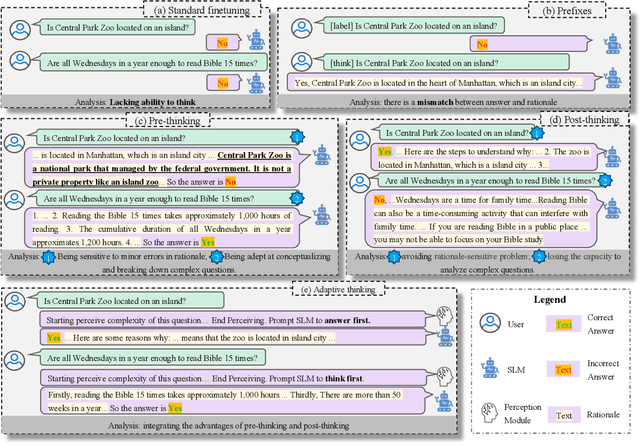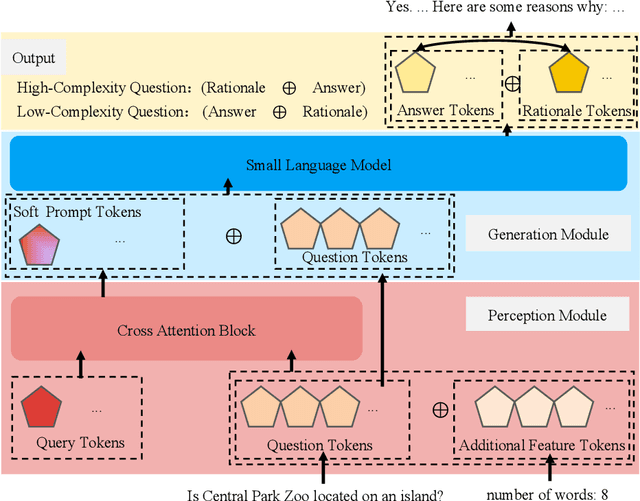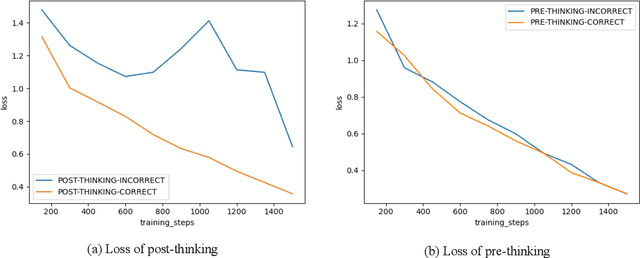Ke Liang
Measure Domain's Gap: A Similar Domain Selection Principle for Multi-Domain Recommendation
May 26, 2025Abstract:Multi-Domain Recommendation (MDR) achieves the desirable recommendation performance by effectively utilizing the transfer information across different domains. Despite the great success, most existing MDR methods adopt a single structure to transfer complex domain-shared knowledge. However, the beneficial transferring information should vary across different domains. When there is knowledge conflict between domains or a domain is of poor quality, unselectively leveraging information from all domains will lead to a serious Negative Transfer Problem (NTP). Therefore, how to effectively model the complex transfer relationships between domains to avoid NTP is still a direction worth exploring. To address these issues, we propose a simple and dynamic Similar Domain Selection Principle (SDSP) for multi-domain recommendation in this paper. SDSP presents the initial exploration of selecting suitable domain knowledge for each domain to alleviate NTP. Specifically, we propose a novel prototype-based domain distance measure to effectively model the complexity relationship between domains. Thereafter, the proposed SDSP can dynamically find similar domains for each domain based on the supervised signals of the domain metrics and the unsupervised distance measure from the learned domain prototype. We emphasize that SDSP is a lightweight method that can be incorporated with existing MDR methods for better performance while not introducing excessive time overheads. To the best of our knowledge, it is the first solution that can explicitly measure domain-level gaps and dynamically select appropriate domains in the MDR field. Extensive experiments on three datasets demonstrate the effectiveness of our proposed method.
Skip-Thinking: Chunk-wise Chain-of-Thought Distillation Enable Smaller Language Models to Reason Better and Faster
May 24, 2025Abstract:Chain-of-thought (CoT) distillation allows a large language model (LLM) to guide a small language model (SLM) in reasoning tasks. Existing methods train the SLM to learn the long rationale in one iteration, resulting in two issues: 1) Long rationales lead to a large token-level batch size during training, making gradients of core reasoning tokens (i.e., the token will directly affect the correctness of subsequent reasoning) over-smoothed as they contribute a tiny fraction of the rationale. As a result, the SLM converges to sharp minima where it fails to grasp the reasoning logic. 2) The response is slow, as the SLM must generate a long rationale before reaching the answer. Therefore, we propose chunk-wise training (CWT), which uses a heuristic search to divide the rationale into internal semantically coherent chunks and focuses SLM on learning from only one chunk per iteration. In this way, CWT naturally isolates non-reasoning chunks that do not involve the core reasoning token (e.g., summary and transitional chunks) from the SLM learning for reasoning chunks, making the fraction of the core reasoning token increase in the corresponding iteration. Based on CWT, skip-thinking training (STT) is proposed. STT makes the SLM automatically skip non-reasoning medium chunks to reach the answer, improving reasoning speed while maintaining accuracy. We validate our approach on a variety of SLMs and multiple reasoning tasks.
Soft Reasoning Paths for Knowledge Graph Completion
May 06, 2025Abstract:Reasoning paths are reliable information in knowledge graph completion (KGC) in which algorithms can find strong clues of the actual relation between entities. However, in real-world applications, it is difficult to guarantee that computationally affordable paths exist toward all candidate entities. According to our observation, the prediction accuracy drops significantly when paths are absent. To make the proposed algorithm more stable against the missing path circumstances, we introduce soft reasoning paths. Concretely, a specific learnable latent path embedding is concatenated to each relation to help better model the characteristics of the corresponding paths. The combination of the relation and the corresponding learnable embedding is termed a soft path in our paper. By aligning the soft paths with the reasoning paths, a learnable embedding is guided to learn a generalized path representation of the corresponding relation. In addition, we introduce a hierarchical ranking strategy to make full use of information about the entity, relation, path, and soft path to help improve both the efficiency and accuracy of the model. Extensive experimental results illustrate that our algorithm outperforms the compared state-of-the-art algorithms by a notable margin. The code will be made publicly available after the paper is officially accepted.
Knowledge Graph Completion with Relation-Aware Anchor Enhancement
Apr 08, 2025Abstract:Text-based knowledge graph completion methods take advantage of pre-trained language models (PLM) to enhance intrinsic semantic connections of raw triplets with detailed text descriptions. Typical methods in this branch map an input query (textual descriptions associated with an entity and a relation) and its candidate entities into feature vectors, respectively, and then maximize the probability of valid triples. These methods are gaining promising performance and increasing attention for the rapid development of large language models. According to the property of the language models, the more related and specific context information the input query provides, the more discriminative the resultant embedding will be. In this paper, through observation and validation, we find a neglected fact that the relation-aware neighbors of the head entities in queries could act as effective contexts for more precise link prediction. Driven by this finding, we propose a relation-aware anchor enhanced knowledge graph completion method (RAA-KGC). Specifically, in our method, to provide a reference of what might the target entity be like, we first generate anchor entities within the relation-aware neighborhood of the head entity. Then, by pulling the query embedding towards the neighborhoods of the anchors, it is tuned to be more discriminative for target entity matching. The results of our extensive experiments not only validate the efficacy of RAA-KGC but also reveal that by integrating our relation-aware anchor enhancement strategy, the performance of current leading methods can be notably enhanced without substantial modifications.
Let Synthetic Data Shine: Domain Reassembly and Soft-Fusion for Single Domain Generalization
Mar 17, 2025Abstract:Single Domain Generalization (SDG) aims to train models with consistent performance across diverse scenarios using data from a single source. While using latent diffusion models (LDMs) show promise in augmenting limited source data, we demonstrate that directly using synthetic data can be detrimental due to significant feature distribution discrepancies between synthetic and real target domains, leading to performance degradation. To address this issue, we propose Discriminative Domain Reassembly and Soft-Fusion (DRSF), a training framework leveraging synthetic data to improve model generalization. We employ LDMs to produce diverse pseudo-target domain samples and introduce two key modules to handle distribution bias. First, Discriminative Feature Decoupling and Reassembly (DFDR) module uses entropy-guided attention to recalibrate channel-level features, suppressing synthetic noise while preserving semantic consistency. Second, Multi-pseudo-domain Soft Fusion (MDSF) module uses adversarial training with latent-space feature interpolation, creating continuous feature transitions between domains. Extensive SDG experiments on object detection and semantic segmentation tasks demonstrate that DRSF achieves substantial performance gains with only marginal computational overhead. Notably, DRSF's plug-and-play architecture enables seamless integration with unsupervised domain adaptation paradigms, underscoring its broad applicability in addressing diverse and real-world domain challenges.
Keeping Yourself is Important in Downstream Tuning Multimodal Large Language Model
Mar 06, 2025Abstract:Multi-modal Large Language Models (MLLMs) integrate visual and linguistic reasoning to address complex tasks such as image captioning and visual question answering. While MLLMs demonstrate remarkable versatility, MLLMs appears limited performance on special applications. But tuning MLLMs for downstream tasks encounters two key challenges: Task-Expert Specialization, where distribution shifts between pre-training and target datasets constrain target performance, and Open-World Stabilization, where catastrophic forgetting erases the model general knowledge. In this work, we systematically review recent advancements in MLLM tuning methodologies, classifying them into three paradigms: (I) Selective Tuning, (II) Additive Tuning, and (III) Reparameterization Tuning. Furthermore, we benchmark these tuning strategies across popular MLLM architectures and diverse downstream tasks to establish standardized evaluation analysis and systematic tuning principles. Finally, we highlight several open challenges in this domain and propose future research directions. To facilitate ongoing progress in this rapidly evolving field, we provide a public repository that continuously tracks developments: https://github.com/WenkeHuang/Awesome-MLLM-Tuning.
Object Style Diffusion for Generalized Object Detection in Urban Scene
Dec 18, 2024



Abstract:Object detection is a critical task in computer vision, with applications in various domains such as autonomous driving and urban scene monitoring. However, deep learning-based approaches often demand large volumes of annotated data, which are costly and difficult to acquire, particularly in complex and unpredictable real-world environments. This dependency significantly hampers the generalization capability of existing object detection techniques. To address this issue, we introduce a novel single-domain object detection generalization method, named GoDiff, which leverages a pre-trained model to enhance generalization in unseen domains. Central to our approach is the Pseudo Target Data Generation (PTDG) module, which employs a latent diffusion model to generate pseudo-target domain data that preserves source domain characteristics while introducing stylistic variations. By integrating this pseudo data with source domain data, we diversify the training dataset. Furthermore, we introduce a cross-style instance normalization technique to blend style features from different domains generated by the PTDG module, thereby increasing the detector's robustness. Experimental results demonstrate that our method not only enhances the generalization ability of existing detectors but also functions as a plug-and-play enhancement for other single-domain generalization methods, achieving state-of-the-art performance in autonomous driving scenarios.
Post-Semantic-Thinking: A Robust Strategy to Distill Reasoning Capacity from Large Language Models
Apr 14, 2024



Abstract:Chain of thought finetuning aims to endow small student models with reasoning capacity to improve their performance towards a specific task by allowing them to imitate the reasoning procedure of large language models (LLMs) beyond simply predicting the answer to the question. However, the existing methods 1) generate rationale before the answer, making their answer correctness sensitive to the hallucination in the rationale;2) force the student model to repeat the exact LLMs rationale expression word-after-word, which could have the model biased towards learning the expression in rationale but count against the model from understanding the core logic behind it. Therefore, we propose a robust Post-Semantic-Thinking (PST) strategy to generate answers before rationale. Thanks to this answer-first setting, 1) the answering procedure can escape from the adverse effects caused by hallucinations in the rationale; 2) the complex reasoning procedure is tightly bound with the relatively concise answer, making the reasoning for questions easier with the prior information in the answer; 3) the efficiency of the method can also benefit from the setting since users can stop the generation right after answers are outputted when inference is conducted. Furthermore, the PST strategy loose the constraint against the generated rationale to be close to the LLMs gold standard in the hidden semantic space instead of the vocabulary space, thus making the small student model better comprehend the semantic reasoning logic in rationale. Extensive experiments conducted across 12 reasoning tasks demonstrate the effectiveness of PST.
MKA: A Scalable Medical Knowledge Assisted Mechanism for Generative Models on Medical Conversation Tasks
Dec 05, 2023



Abstract:Using natural language processing (NLP) technologies to develop medical chatbots makes the diagnosis of the patient more convenient and efficient, which is a typical application in healthcare AI. Because of its importance, lots of research have been come out. Recently, the neural generative models have shown their impressive ability as the core of chatbot, while it cannot scale well when directly applied to medical conversation due to the lack of medical-specific knowledge. To address the limitation, a scalable Medical Knowledge Assisted mechanism, MKA, is proposed in this paper. The mechanism aims to assist general neural generative models to achieve better performance on the medical conversation task. The medical-specific knowledge graph is designed within the mechanism, which contains 6 types of medical-related information, including department, drug, check, symptom, disease, food. Besides, the specific token concatenation policy is defined to effectively inject medical information into the input data. Evaluation of our method is carried out on two typical medical datasets, MedDG and MedDialog-CN. The evaluation results demonstrate that models combined with our mechanism outperform original methods in multiple automatic evaluation metrics. Besides, MKA-Bert-GPT achieves state-of-the-art performance. The open-sourced codes are public: https://github.com/LIANGKE23/Knowledge_Assisted_Medical_Dialogue_Generation_Mechanism
Single-cell Multi-view Clustering via Community Detection with Unknown Number of Clusters
Nov 28, 2023



Abstract:Single-cell multi-view clustering enables the exploration of cellular heterogeneity within the same cell from different views. Despite the development of several multi-view clustering methods, two primary challenges persist. Firstly, most existing methods treat the information from both single-cell RNA (scRNA) and single-cell Assay of Transposase Accessible Chromatin (scATAC) views as equally significant, overlooking the substantial disparity in data richness between the two views. This oversight frequently leads to a degradation in overall performance. Additionally, the majority of clustering methods necessitate manual specification of the number of clusters by users. However, for biologists dealing with cell data, precisely determining the number of distinct cell types poses a formidable challenge. To this end, we introduce scUNC, an innovative multi-view clustering approach tailored for single-cell data, which seamlessly integrates information from different views without the need for a predefined number of clusters. The scUNC method comprises several steps: initially, it employs a cross-view fusion network to create an effective embedding, which is then utilized to generate initial clusters via community detection. Subsequently, the clusters are automatically merged and optimized until no further clusters can be merged. We conducted a comprehensive evaluation of scUNC using three distinct single-cell datasets. The results underscored that scUNC outperforms the other baseline methods.
 Add to Chrome
Add to Chrome Add to Firefox
Add to Firefox Add to Edge
Add to Edge